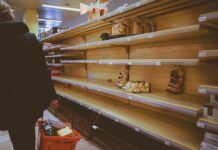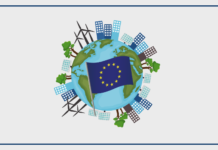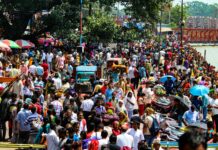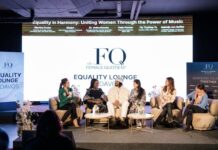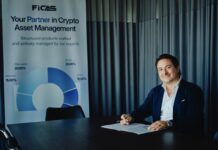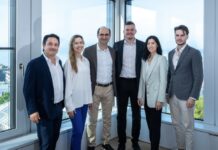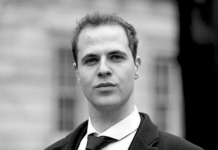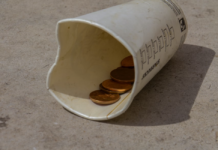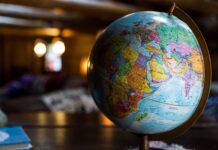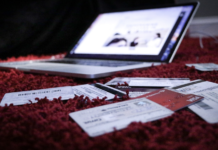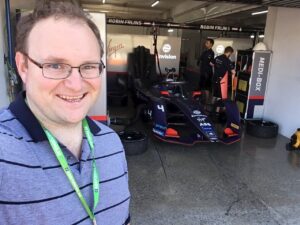
By Carina Schuster, Technology Editor
I had the chance to talk with Science Editor Kit Chapman, my former lecturer at Falmouth University and author of “Racing Green”, where we debated the future of science, as LGBTQ+ and how he made it into science journalism sharing fascinating stories that would reshape the world of journalism.
Kit Chapman is an award-winning medical and science journalist, covering multiple stories for the BBC Science Focus, and The Daily Telegraph, with astonishing experience in the scientific world.
The Beginning
He studied for a pharmacy medical degree, and worked at a hospital in Scarborough, Yorkshire England, he described that during the exam he couldn’t put his name down, he didn’t feel that was his place, like an internal voice asking: “Are you sure this is what you want to do with your life?”.
Later on, he decided to take one year gap to figure life out and see what happens next.
He ended up getting a job as GP Assistant Editor and eventually got to report at Chemist + Druggist on a weekly magazine for community pharmacists in the UK.
What is part of becoming a Science Journalist?
It starts with imagining new things, sharing knowledge from a scientific background and trying to explain it easily so that everyone could understand.
In school, his favourite subject was history as he is a historian too, and it ties to science because the main question that stays behind is: What kind of stories would you use to communicate science?
The Chemistry Community Story was a success
Mr Chapman describes one of his most exciting journeys discovering elements for a scientific reporting task, which consisted of flying to Moscow with his cameraman to see a laboratory.
Besides being in the right place at the right time, he enthusiastically describes how sending an email and asking the right question matters:
“That one email changed my life without questioning”
The Road to Book writing
They spent 3 days in Russia, where they got the chance to investigate how elements are made, the project became a 9000-word work, talking to various people all around the world.
It was a story where he realised that he wanted to be more than just a journalist, he discovered his storytelling abilities and desire to be a writer.
How to keep the young audience interested?
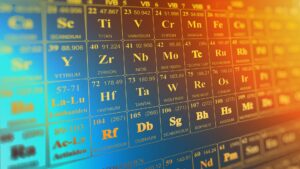
It’s quite challenging explaining subjects that are dealt with so much accuracy, for instance, an element called Einsteinium, (One of the building blocks of the Universe) because not everyone might be familiar with the term.
Jimmy Robinson, an American pilot working in the military service, was flying with Mike’s military testing device over the Marshall Islands, getting into the unknown – when the incident took place on 1 November 1952.
When the nuclear storm occurred, the result was a fusion of atoms causing different reactions, that finally led to the discovery of elements 99 and 100.
The interesting fact was that the process of detonation was considered way 500 times more powerful than the Hiroshima bomb explosion.
Although it is a heavy element that doesn’t exist naturally, it is particularly fascinating how impacting it was for the world of science, when the pilot tragically died bringing the element back to the base, running out of fuel and crashing the plane.
The key point in creating a life-changing story might put people’s lives in danger to discover new elements, Science comes into play by asking the reasons behind the experiments.
Bring it into context and find a place in the universe
Dr Kit Chapman is reminiscing about the moment when he got to visit the pilot’s daughter and asked her about her dad’s death, adding that: what her dad did was incredible, it’s an important story addressed to humanity.
Therefore, it was one of the biggest pieces in history, it wasn’t just about science anymore: “Journalism is about telling these fascinating stories and expressing ways that resonate with people”.
Studying journalism is not enough
Additionally, becoming a journalist might be a long road, however, aiming for a background in Journalism is not essential, to tell stories, it is crucial to take 2 ideas or multiple skills that might blend well together, for example, Science and Journalism.
When asked about what is the most important skill, especially when dealing with scientific information, nevertheless journalistic work, he added:
“Having an inquisitive nature of finding out the truth, as humans are naturally inquisitive, but not to settle with just the surface story, otherwise, it’s just a press release”
A more important aspect is making contact with people and establishing that human connection, which is something journalists need to develop and be confident while they speak with people.
On the other side, being a good listener helps too because the focus of the story should be people, which requires a particular observation.
Pre-Media Era
2O years ago people were buying magazines, as a matter of fact, journalists were doing more editorial work, and they were strained on the path: “You’re here for life, that’s how journalism was”.
Switching to a digitalised era:
“You got to be aware of moving in terms of 21st-century technology, that means mobile journalism, how to communicate on social media”
On the other hand, today is also more democratic:
“Everyone could excel as a journalist; particularly getting a diversity of voices”.
The pressure of the media
It’s particularly difficult for experienced journalists to admit that they don’t know something, due to the external pressure of exhibiting the truth, not anymore as humans but as machines.
During his practising years, he reminds journalists to not always expect to be on the first page of a magazine, as a reporter himself he was asked to write a comedy story on the back page:
“Don’t run before you can walk”
It took months of practising before hitting headlines, researching usually consists of 80% of the work, and then getting into the editing process before publishing. In the production process, he marked out the importance of working alongside editors and checking up on the work.
How Motorsport Science Can Save The World
Mechanical expertise led to machines that helped in the pandemic period: CPAP prototypes (continuous positive airway pressure) with the main role of helping patients facing respiratory failures.
After intense 6 months of research, back in 2020, Dr Chapman came across the story: working with Mercedez Benz and Formula One machines to create the concept of “green machines”.
Incredibly, they found this medical device called CPAP that was used for people who struggled to breathe at night, they found a prototype in hundreds of hours and analysed how it was made. Spectacularly, in just 2 weeks it got medical approval from the UK authorities, which normally would take years.
In this case, it took 1 month to produce 10,000 machines to develop such a device that saves lives which is an astonishing engineering item developed in a record time.
The book “Racing Green” took 18 months of writing and it was taught in schools and universities, after a long ride struggling with the editing changes and immersive writing process between 2019-2022.
In fact, during the pandemic, the research process slowed down considerably, but it was about 7 months of research spiralling because of the immensity of subjects to cover.
In the US it was a huge success, with approximately 10,000 copies translated into the whole world, where Kit received copies in Chinese and Japanese too.
Owning up to mistakes
Scientists often tend to think that when they’re communicating their work it’s doubling down their work, which is not, it’s a different language, it’s all about translating that work into a language that everybody understands:
“never talk down to your audience thinking they don’t know the answer; your audience is not stupid”
Another vital issue includes Wikipedia as a source of information, more often omitting to ask if the source given is accurate and reliable.
In a referencing process, it’s critical to always interrogate the source and expertise, using the tools and engagement to get the information.
When Mr Chapman was asked about the most essential tip in journalism, he replied:
“allow yourself to make mistakes, just own up to them”
Making mistakes is essential in the learning process, and although, admitting them is essential in the trust-building process, the audience’s behaviour is kept to questioning whether the information presented is valid.
Carina Schuster is a multilingual tech and science editor for The London Financial & a podcast anchor and producer for SciTech Suisse, covering groundbreaking stories in the matter of disruptive technology developments and interviewing top experts in AI, the Metaverse, Web3, Blockchain and scientific research. Throughout her experience as a journalist in the editorial and digital worlds, she was selected by CNN Money Switzerland in 2020 as a digital producer intern and has demonstrated a collaborative and creative spirit, working alongside talented journalists and delivering impactful stories with the main aim of simplifying the complexity of technology.


